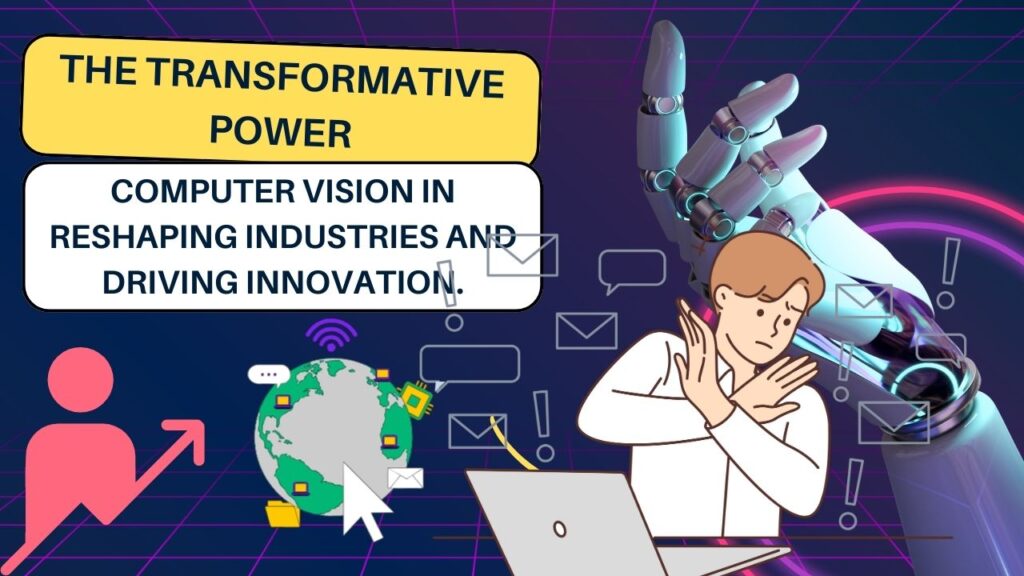
In the realm of Artificial Intelligence (AI), Computer Vision (CV) stands out as a transformative force, imbuing machines with the remarkable ability to perceive and comprehend the visual world akin to human cognition. Through the sophisticated analysis of images and videos, CV algorithms discern intricate details, detect objects, and extract valuable insights. This article delves into the myriad applications and boundless potential of Computer Vision, spanning industries from autonomous vehicles to healthcare, and beyond.
Deciphering the Visual Realm:
Computer Vision entails the development and deployment of algorithms that enable machines to interpret and understand visual data. By leveraging techniques such as image recognition, object detection, and semantic segmentation, CV algorithms dissect complex visual scenes, discerning patterns and structures with remarkable precision. This capability mirrors the human visual system, empowering machines to navigate and comprehend their surroundings autonomously.
The Evolution of Computer Vision:
The journey of Computer Vision traces back to the 1960s when researchers began exploring the possibilities of teaching machines to interpret visual data. Early efforts focused on basic tasks such as character recognition and edge detection, laying the groundwork for future advancements. However, it wasn’t until the advent of deep learning and convolutional neural networks (CNNs) in the 2010s that Computer Vision witnessed a revolution. These breakthroughs enabled CV algorithms to achieve unprecedented accuracy and performance, fueling applications across industries.
Applications Across Industries:
The impact of Computer Vision reverberates across diverse sectors, catalyzing innovation and driving efficiency:
- Autonomous Vehicles: In the realm of transportation, Computer Vision plays a pivotal role in enabling autonomous vehicles to perceive and navigate their environment safely. CV algorithms analyze sensor data from cameras, LiDAR, and radar to identify objects, detect lane markings, and anticipate potential hazards, ensuring seamless navigation on roads and highways.
- Surveillance and Security: In the realm of surveillance, Computer Vision serves as a cornerstone of threat detection and crime prevention. Surveillance systems equipped with CV algorithms monitor public spaces, identify suspicious activities, and alert authorities to potential security threats, bolstering public safety and security infrastructure.
- Healthcare Imaging: Within the realm of healthcare, Computer Vision revolutionizes medical imaging and diagnostics. CV algorithms analyze radiological images such as X-rays, MRIs, and CT scans to detect anomalies, identify diseases, and assist clinicians in diagnosis and treatment planning. From early detection of tumors to assessment of fracture severity, CV enhances patient care and clinical decision-making.
- Retail and E-commerce: In the realm of retail, Computer Vision drives personalized shopping experiences and enhances operational efficiency. Retailers leverage CV algorithms to analyze customer behavior, track inventory, and optimize shelf layout, enhancing customer engagement and streamlining inventory management processes.
- Augmented Reality (AR) and Virtual Reality (VR): Within the realm of immersive technologies, Computer Vision powers augmented reality and virtual reality experiences. CV algorithms track user movements, recognize gestures, and overlay digital content onto the physical world, creating immersive and interactive environments for entertainment, education, and training.
Advancements and Future Directions:
As Computer Vision continues to evolve, propelled by advancements in deep learning, sensor technologies, and computational capabilities, its potential for transformative impact knows no bounds. Emerging trends such as real-time video analysis, 3D scene understanding, and human pose estimation promise to unlock new frontiers of innovation and revolutionize industries ranging from manufacturing to entertainment.
Challenges and Considerations:
While the applications of Computer Vision are vast and promising, the field also presents several challenges and considerations:
- Data Quality and Bias: CV algorithms rely heavily on labeled datasets for training, and the quality and representativeness of these datasets can significantly impact algorithm performance. Moreover, biases present in training data can lead to skewed outcomes and ethical concerns, highlighting the importance of data diversity and fairness-aware algorithms.
- Interpretability and Explainability: As CV algorithms become more complex, understanding how they arrive at their decisions becomes increasingly challenging. Ensuring transparency and interpretability in CV models is essential for building trust and confidence in AI systems, particularly in high-stakes domains such as healthcare and criminal justice.
- Privacy and Security: CV applications often involve the collection and analysis of sensitive visual data, raising concerns about privacy and security. Safeguarding against unauthorized access, data breaches, and misuse of personal information is paramount to maintaining user trust and compliance with regulations such as GDPR and CCPA.
Conclusion:
Computer Vision stands as a testament to the remarkable capabilities of Artificial Intelligence, transforming how machines perceive and interact with the visual world. From autonomous vehicles navigating bustling city streets to healthcare systems diagnosing diseases with precision, the applications of CV are as diverse as they are profound. As we continue to unlock the full potential of Computer Vision, we embark on a journey towards a future where machines see, understand, and interpret the world with unprecedented clarity and insight.






